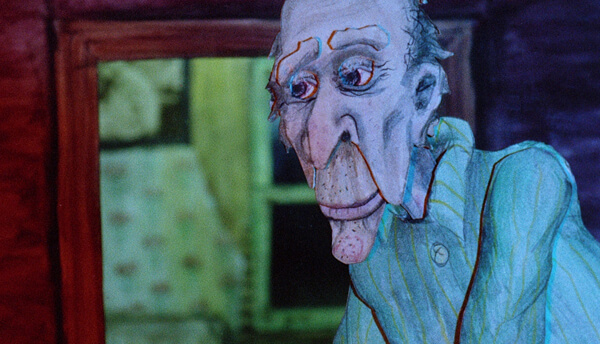Ben Rimalower in his Duplex show, “Patti Issues.” | CHRISTIAN COULSON
There can be little doubt that Patti LuPone is the current reigning Eminence of Broadway — and cabaret. With her sensational pipes, which can belt as well as lyrically melt, her dramatic sense, and her keen musicality, she’s Ethel Merman and Mary Martin combined, and a far greater actress than either of them ever dreamed of being. Her worshippers are legion but there can be no greater one than Ben Rimalower, whose show, “Patti Issues,” now at the Duplex (Dec. 21-22, 28-29, 9:30 p.m.; Dec. 30, 7 p.m. this month & through Feb. 28, 61 Christopher St. at Seventh Ave. S, Sheridan Square; theduplex.com), embraces his obsession.
“My father was the biggest bottom in Los Angeles!” he brays at one point in his breathlessly paced, often hilarious show, and this is just the tip of the iceberg of dysfunctional family revelations. That statement might lead you to infer that he sprang from a splintered clan, and you’d be dead right. And, as a rebuke to all that “It gets better” politically correct palaver, it really never did, especially in terms of his relationship with his unavailable, selfish, and often very immature Dad. Even in later years, the shared fact of their being gay offered no real bond between them.
What kept Rimalower going, in the same way as Judy and Barbra for previous generations of alienated, misunderstood little gay boys, was Patti, especially her recording of “Evita.” His show is a total immersion in LuPone-itis, with him waxing rhapsodic over her distinct genius at phrasing while delivering a few choice digs at her Broadway Queen rival, Bernadette Peters. (True to form, as with so many obsessed fans, there can be no greater love for a star than the kind that involves total hatred of her rivals, dating back to Bette vs. Joan or Callas vs. Tebaldi — or Sutherland — and, in fact, well before that.)
Ben Rimalower with his muse. | JENNY ANDERSON FOR BROADWAY.COM
Rimalower came to New York as soon as he possibly could, with theater director ambitions and, through family connections (proving that even the most dysfunctional blood relations can have their advantages), landed a job as assistant to director Lonny Price, who was mounting the New York Philharmonic revival of “Sweeney Todd,” starring no less than LuPone herself. At this point in Rimalower’s story, the show becomes even more breathless as he describes his often excruciatingly clueless and slavish behavior around the star.
Given the cherished task of organizing her collection of performance videos, he happened upon her legendary cabaret appearance at Les Mouches, which she would do every Saturday night following the evening performance of “Evita.” He then came up with the idea of having actress Leslie Kritzer recreate the entire show, which had a popular run at Joe’s Pub, with LuPone’s approval. But, when he came up with the idea of transferring the star’s performance to CD, Rimalower felt the inevitable scorching heat that happens when one flies too close to the flame of a diva’s ego.
(I must confess that, having heard the recording of LuPone at Les Mouches, I was underwhelmed, not finding it the so-called Holy Grail akin to Bette Midler’s mythic Continental Baths performances. The show is all over the place, as is the star, who seems a bit — ahem — pharmaceutically rejuvenated; well it was 1980! It naturally includes her singing her trademark “Meadowlark” from her show “The Baker’s Wife,” an emptily histrionic song whose appeal has also always eluded me.)
Things eventually got patched up between Rimalower and LuPone sufficiently for him to be invited to the dress rehearsal of her triumphant “Gypsy.” He saw the show many times, including a performance that found him sitting directly in front of his long-estranged father, which event brings his life full circle and his manic show to an end.
I wonder what Rimalower’s reaction would be to LuPone’s show “The Atheist,” the David Mamet play that just closed ignominiously. Mamet’s “Race” was infuriating in its well-heeled white man’s vision of interracial relations, the kind of thing wealthy theater patrons love going to, to feel bad about being Caucasian for a couple of hours before returning home to Westchester or the Upper East Side with perhaps the virtuous intention of being extra-generous to the help over the holidays. But at least it wasn’t boring. With the paltry “The Atheist,” one gets the feeling that this over-produced writer is indeed written out.
The show started with LuPone and Debra Winger talking in patented Mamet machine gun-fire style while saying nothing. The woman next to me turned to her companion and asked, “Can you hear them?” “No,” came the reply, whereupon the woman promptly fell asleep for the show’s duration, as did the man on the other side of me.
I spent the most decadent morning I can remember on December 12 when I went out to MoMA PS1 for the press preview of its major Pier Paolo Pasolini retrospective (22-25 Jackson Ave. at 46th Ave., Long Island City, through Jan. 7; momaps1.org). Growing up in Hawaii, the Communist poet and filmmaker Pasolini was, of all people, a seminal figure in my discovery of my sexuality. His famous “Tales” trilogy of “The Decameron,” “Canterbury Tales,” and “Arabian Nights” somehow got shown theatrically there, and their lustiness and homoeroticism were eye-opening, to say the least.
Like everyone, I was shocked by his final film, “Salo, or the 120 Days of Sodom” in 1975, and even more so by his death that year. He was brutally murdered and then run over several times by his own car on a beach near Rome. The murder remains a mystery, with Pasolini’s killer being variously identified as a 17-year-old hustler, a trio of anti-Communists, and an extortionist.
The decadence I referred to was wholly in the spirit of Pasolini’s unquenchable love of life, delivered by the wine provided at the press breakfast, which, due to the continuous pouring of my Russian and Australian tablemates, had me drunk by 10 a.m. The PS1 exhibit consists of continuous, environmentally appropriate showings of Pasolini’s “Medea,” starring Maria Callas, “Teorema,” starring Terence Stamp as a beautiful stranger who seduces an entire family of haute-bourgeoises, including the glamorously etiolated Silvana Mangano, and “Salo.” I staggered into the “Salo” salon and finally watched the entirety of this oh-so brutal, but oh-so sexy depiction of Italian fascisti in 1944 — though my cell phone came in handy in blocking the view when things got too savage.
We were all delighted to see Pasolini’s muse, the actor Ninetto Davoli, who starred in all the “Tales” and was quite the sexual fantasy of my youth. Silver-haired now, but still devastatingly handsome and brimming over with joie de vivre, he spoke effusively through a translator about his late mentor, what a great poet he was, and how, when the two of them were once in Canada for a film event, Davoli persuaded him to come to New York for the first time: “Pasolini loved the energy and excitement of your city! He said this is nothing like Rome!”
MoMA will be showing all of Pasolini’s films in gorgeous, newly struck prints by Luce Cinecitta, coinciding with a new book, “Pier Paolo Pasolini: My Cinema” (Cineteca di Bologna/ Luce Cinecitta). If you have never seen it, I urge you to catch my favorite, and perhaps the most accessible of this difficult genius’ works, “Mama Roma,” starring Anna Magnani in one of her greatest performances, entailing, as always, oceans of humor and heartbreak.
More cinematic riches are currently to be found on Manhattan screens. I can only add my praise to “Any Day Now,” one of the better gay films, for its true depiction of life in the 1970s, which, while full of joyous post-Stonewall/ pre-AIDS hedonism, was a pretty dark place where legal matters were concerned. The film is one of the most devastating — and honest — tearjerkers I’ve ever seen, about a gay couple’s custody battle for a kid with Down Syndrome nobody wants anyway. Isaac Leyva will shatter your heart as the boy, while Garrett Dillahunt, as one half of the couple, is your very dream of the perfect, solid, and sexy boyfriend.
As the other half, Alan Cumming gives his best onscreen performance yet. Singing a great cover of France Joli’s disco standard “Come to Me,” pulling off a raggedy drag act, cracking wise in the dark, and fighting fiercely for certain rights that have yet to be bestowed, he is magnificent, somehow reminding me of no one so much as the aforementioned Magnani, and there can be no praise higher than that.
A still from Chris Sullivan’s “Consuming Spirits,” now playing at Film Forum. | CHRIS SULLIVAN
“Consuming Spirits,” which I hope continues at Film Forum (and if it doesn’t, hunt it down) is, hands down, the year’s most creative film. Chris Sullivan made it over a 15-year period, and you can appreciate his effort and care in every densely rich frame of this animated film like no other. Sullivan and an army of helpers painstakingly created it, frame by frame, utilizing elaborately layered multi-plane cutout animation and drawings on paper, as well as model miniatures and photographs.
It takes place in the Appalachian burg of Magguson, centering on three spectacularly dolorous main characters — radio announcer Earl Gray, newspaper paste-up artist Gentian Violet, and her sometimes love interest, Victor Blue, an alcoholic co-worker whose life is described as “a terminal social-service project.”
That last should give you some idea of the film’s wondrously dark humor, full as it is of healthy attacks upon the Catholic Church, as well as, well, being Irish. Floods of drink go down at the local pub, the Juice of the Barley, while Gentian gets called on the carpet for creating too-weird newspaper headlines like “Gentian Violet Admits Concealing Nun Under Solitary Faggot” and they all try to infiltrate the secrets of the neighborhood combined convent/ insane asylum, the Sisters of the Holy Order of the Evacuated Sepulcher. This institution is run by the Reverend Mother Mary Elastica, who puts up signs that read “Prayers are not gratis” and advertises for nuns with “Unknown women preferred.”
It’s all quite twisted and often oddly beautiful, and a perfect, bitterly funny antidote to the holiday season.
Contact David Noh at Inthenoh@aol.com and check out his blog at http://nohway.wordpress.com/.








































